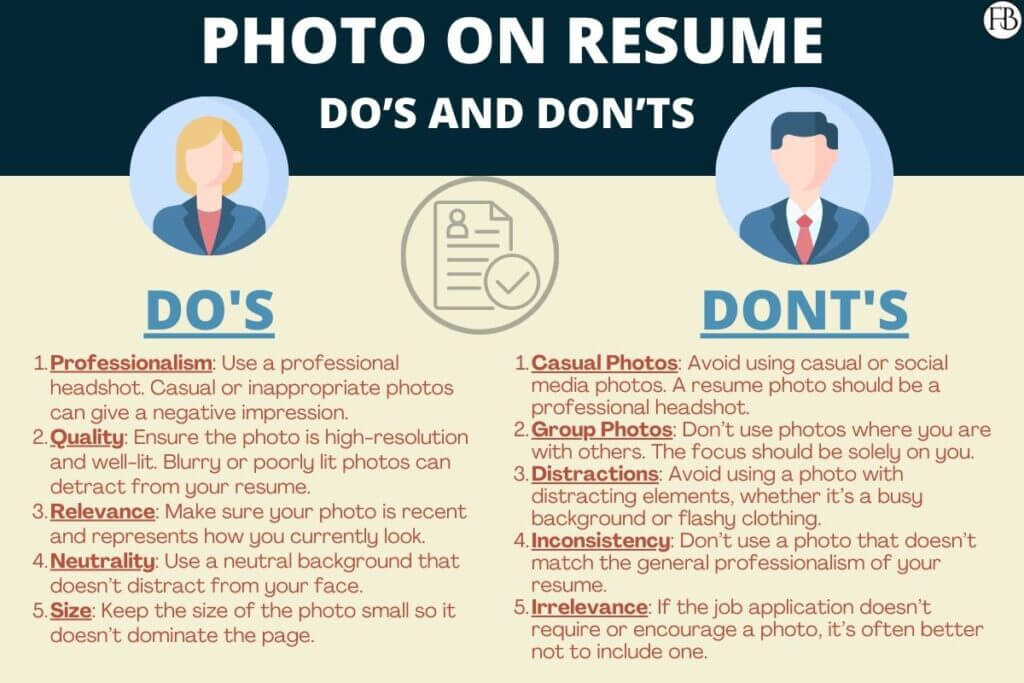
How can I find affordable housing for student living?
March 30, 2024
Best 10 Sites for Free Online Psychometric Test Practice Hack
April 13, 2024Considering a Photo in CV: What You Need to Know
For all job applications, the resume or curriculum vitae (CV) remains the undisputed heavyweight champion of self-presentation. A résumé is often a potential employer’s first glimpse into the professional life and capabilities of a candidate. For decades, the standard advice has been to include a compelling snapshot of your educational background and work experience—without an actual “snapshot” of yourself. However, the tides may be turning. Nowadays, with the fusion of personal branding and visual storytelling, the debate rages on whether you should include a photo in CV or resume.
In this discussion, I will unpack valid arguments on both sides of this divisive issue. I will address the nuances of cultural differences and contextual scenarios where a photo in CV or resume could enhance your application or, conversely, detriment your chances. For the audience of job seekers, students, and recent graduates navigating this pivotal aspect of the employment process, understanding the role of visuals in your resume is critical.
The Role of the Visual
Your resume or CV is the first impression you make on potential employers. It is your billboard in the market of employability. Hence, every element in this document should be strategically placed to flatter your strengths and qualifications, which means space is premium real estate. In an age where visuals dominate every facet of life, can a photo enhance the impact of your credentials, or does it detract from the core message of your application?
The Visual Argument
Those in favour of the photograph argue that it humanises the application. In a sea of text, a smiling face might just be the buoy an employer needs to remember you by. It also helps in personal branding, particularly for roles in sectors that value presentation and personality, like client-facing positions.
The Anti-Picture Campaign
Conversely, opponents to the photo contend that it holds no relevance to job qualifications and creates the potential for unconscious bias, with many studies suggesting that the inclusion of a photo can negatively impact applicants’ prospects, especially in a work environment that values diversity and inclusion.

Navigating Cultural Differences
Different strokes for different folks – and diverse cultures. In some countries, including a photo is as second nature as including one’s contact information, while in others it is strictly discouraged due to anti-discrimination laws and privacy protocols (more on this later).
The Inclusion Continuum
For candidates in Italy, a headshot is as much a part of the application infrastructure as your work history, though, in America or the UK, it is more often seen as a superfluous addition.
The Opt-Out Zone
Germany and the United States encourage excluding photos to avoid any unconscious bias and to place the focus firmly on the applicant’s skills and expertise.
The Pros of Including Photo in CV
Branding and Memorability
A well-chosen image can reinforce an individual’s brand, especially for creative roles where personal identity is closely tied to the position.
First Impressions
A picture can indeed be worth a thousand words in terms of creating a positive first impression and opening a window into your character beyond mere qualifications.
Professional Aesthetic
Including a photo can signal the candidate’s awareness of professionalism and expectations within the job market.
The Cons of Including Photo in CV
Unconscious Bias
Research indicates that having a photo on your resume can lead to unintended, implicit judgments that sway decisions based on factors irrelevant to the job.
Real Estate Concerns
In a world governed by stringent character count and format restrictions, a photo can sometimes seem like a vanity inclusion that eats into the availability of more substantial details that should take precedence.
Irrelevance Alert
In certain roles — software engineering, for example — how you look is immaterial to the task at hand, thus rendering a photo as mere graphical noise.
Choosing the Right Moment to Flash Your Photo in CV
Situations Where a Picture Paints a Thousand Career Words
When the role explicitly involves image-conscious responsibilities — think retail, fashion, or entertainment — a photo is not only appropriate but expected.
The Practice of the Land
Adhere to the cultural and local requirements. If it is a widespread practice where you are applying, not including one could suggest a lack of familiarity with local customs, potentially harming your application.
When The Picture Should Stay Out of Frame
International Applications to “No Picture, Please” Destinations
Some countries and organisations have stringent policies prohibiting the submission of applicant photos. Respect these guidelines to avoid your resume ending up in the discard pile.
Employer Request: No Photo
If a recruiting company specifies a no-photo policy in their job ad or application guidelines, this serves as a direct cue to exclude one.
Capturing the Right Photo in CV
The Portrait of Professionalism
Your resume photo should reflect the same professional standards as the rest of your application. Dress the part of your ideal job, maintain a pleasant expression, and ensure the backdrop is neutral and free from distractions.
Size Matters
Inclusion, but with subtlety. The photo should be passport-sized, occupying a minimal corner of your resume without overshadowing its text content.
Closing In on the Perfect Snap
The argument of whether to include a photo in CV or resume is no fool-proof decision. With the work landscape dynamic and varied, it is best to approach this visual quandary with a pragmatic, case-by-case assessment.
My Personal Exposure
In my opinion, the scales of this debate are tipped slightly in favour of discretion. While a photo can add vibrancy to your application, the potential risks of bias and space consumption should not be ignored. A well-crafted cover letter or portfolio may serve as a better tool to showcase your personal attributes and creative endeavours.
Your Visual Voyage
Every job search is unique, and while general advice can guide, it is the understanding of the precise requirements and cultural contexts of your aspiration that should lead. Research is your ally in this photo affair.
In the end, the photo question on a resume, much like any choice in an application, should align with the broader strategy of highlighting your best self for the particular job at hand. Remember, it is not the photo that will land you the gig, it is the story behind it. And sometimes, the story is best told without pictures.





1 Comment
A well-written cover letter is definitely more important than a photo.